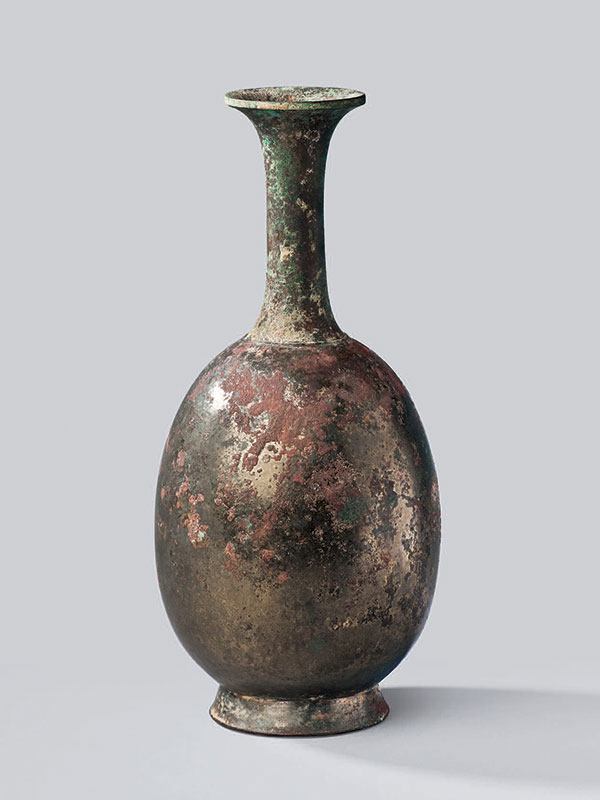Bronze bottle
A bronze bottle, the pear-shaped body supported on a short, splayed foot, which has a rolled edge. The long, slender neck rises from a single ridge at the shoulder and terminates in a flared mouth. The metal has a dark, silvery patina with significant areas of ruby.red and bright green encrustation.
The unadorned nature and stark simplicity of this bottle support the premise that it was made for use in a temple. The Sui dynasty, albeit relatively short in comparison to previous dynasties, marked an important period in Chinese history, since it witnessed the reunification of the country under the rule of a purely Chinese empire.[1] The fact that Buddhism was encouraged during this period is evident from the existence of this elegant bronze bottle; bottles such as this were used in Buddhist temples for ritual purposes and are said to contain the ‘elixir of life’. Sui dynasty Buddhist metal sculptures often represent Avalokitesvara holding a bottle of this shape; see for example a standing figure of Guanyin in the Metropolitan Museum of Art in New York.[2] The minimalist shape originates in metal, but was later seen also in other materials such as pottery. A closely comparable bronze bottle is in the Royal Ontario Museum in Toronto, which also holds two examples in glazed stoneware.[3] Two bronze examples of similar shape and size, respectively dated to the Southern and Northern Dynasties (420 – 589) and to the Tang dynasty, were included in the 1999 exhibition Tin-bronze of China at the Kuboso Memorial Museum of Art in Izumi, Japan.[4]
- Deydier, C. Chinese Bronzes, Rizzoli, New York, 1980, p.157
- Deydier, op cit, p. 160 and 162
- Stephen, B. et al, Royal Ontario Museum, the T.T. Tsui Galleries of Chinese Art, Toronto, 1996, catalogue no. 67
- Special Exhibition of Tin.Bronze of China, Kuboso Memorial Museum of Art, Izumi, 1999, nos. 4 and 50, pp. 8, 29


